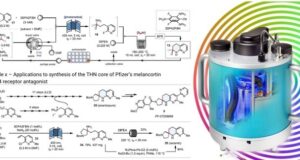New research reveals that keeping a consistent sleep schedule can dramatically lower heart disease risks, challenging the focus on sleep duration alone.
 Study: Sleep regularity and major adverse cardiovascular events: a device-based prospective study in 72,269 UK adults. Image Credit: Olga Strel / Shutterstock
Study: Sleep regularity and major adverse cardiovascular events: a device-based prospective study in 72,269 UK adults. Image Credit: Olga Strel / Shutterstock
A recent study published in the Journal of Epidemiology and Community Health investigated associations between sleep regularity and the risk of major adverse cardiovascular events (MACE).
There has been an increased interest in research on the effects of sleep regularity on health. Sleep regularity is defined as the intraindividual variability in sleep-wake timing. Despite the limited literature in this domain, the consensus is that regularity in daily sleep timing is crucial for health. A recent study found that sleep regularity more robustly predicted mortality than sleep duration. Furthermore, irregular sleep patterns may disrupt circadian rhythms, hormonal regulation, and metabolic processes, contributing to increased cardiovascular risk.
Further, sleep irregularity may be associated with incident cardiovascular disease (CVD) and poorer cardiovascular outcomes. MACE is a composite clinical endpoint aggregating several fatal and non-fatal cardiovascular endpoints responsible for most of the CVD burden. Whether or not healthy sleep duration could alleviate or eliminate the adverse effects of irregular sleep patterns on health is unknown.
About the Study
In the present study, researchers assessed the associations between sleep regularity and the risk of MACE in older and middle-aged adults. Participants from the United Kingdom (UK) Biobank’s accelerometry sub-study who wore wrist accelerometers were included. Participants with insufficient wear time, missing covariate or accelerometry data, history of MACE at baseline, and those who did not monitor sleep were excluded.
Sleep was measured using data from accelerometers worn on the dominant wrist for 24 hours/day for one week. The Sleep Regularity Index (SRI) was calculated using an algorithm and was scored 0–100. In addition, sleep duration was determined using a validated algorithm. Participants were stratified as regular sleepers (SRI > 87.3), moderately irregular sleepers (SRI: 71.6–87.3), and irregular sleepers (SRI < 71.6). SRI captures variability in bedtime, wake-up time, sleep duration, and sleep interruptions, making it a comprehensive measure of sleep regularity.
MACE was the primary outcome measure; it was defined as any fatal cardiovascular event or the incidence of non-fatal stroke, myocardial infarction, or heart failure. Covariates included age, ethnicity, sex, discretionary screen time, coffee intake, Townsend area deprivation index, alcohol intake, smoking status, physical activity, mental health issues, family history of cancer or CVD, shift work status, medication use, and sleep troubles. Body mass index was excluded as a covariate due to its role as a mediator in the causal pathway.
Associations between MACE and SRI were investigated using Cox proportional hazards regression models, adjusted for covariates. In addition, a minimal dose was calculated to provide conservative point estimates. It was defined as the SRI score associated with 50% of optimal risk reduction. The researchers also performed joint SRI and sleep duration analyses. Analyses accounted for competing risks using the Fine-Gray subdistribution method.
Findings
Overall, the analytic sample comprised 72,269 participants, aged 62.1 years, on average, at recruitment. The mean follow-up duration was 7.8 years. More regular sleepers (61%) met the recommended sleep duration, viz., 7–9 hours/day and 7–8 hours/day for those aged 18–64 and ≥ 65 years, respectively, than irregular sleepers (47.8%).
Irregular and moderately irregular sleepers had a higher MACE risk than regular sleepers. Analyses of MACE subtypes revealed explicit associations between irregular sleepers and the risk of myocardial infarction, stroke, and heart failure. For instance, irregular sleep was linked to a 45% higher risk of heart failure. Further, SRI was non-linearly associated with the risk of MACE, with steeper risk reduction at higher SRI scores.
The minimal dose was 77.1, corresponding to a 15% decline in MACE risk. The median SRI score (80.8) was associated with an 18% decrease in MACE risk. Joint analyses indicated that adequate sleep duration could offset the risk of MACE for moderately irregular sleepers only. Repeating the joint analysis with only shift workers yielded similar results. These findings highlight that individuals should aim for an SRI score above 80 for cardiovascular benefits, with incremental improvements observed closer to a perfect score of 100.
Conclusions
The findings suggest a strong association between irregular sleep and MACE risk and that sleep regularity may be more relevant in modulating the risk than adequate sleep duration. Disruptions in circadian rhythms caused by irregular sleep may contribute to cardiovascular risk through mechanisms such as increased inflammation, insulin resistance, and elevated blood pressure. Notably, joint analyses showed that irregular sleep was associated with a greater MACE risk, irrespective of whether participants met the age-specific recommendations for sleep duration.
A minimum SRI score was associated with a 15% reduction in MACE risk, while the median score was associated with an 18% decrease. This suggests that people should aim for SRI above 80. Overall, the findings underscore the need to consider sleep regularity in clinical practice and public health guidelines. Future studies should explore interventions that target sleep regularity, such as consistent sleep schedules and bedtime routines, to improve cardiovascular health.
The study also emphasizes the inclusion of sleep regularity alongside sleep duration in frameworks such as the American Heart Association’s “Life’s Essential 8.”




